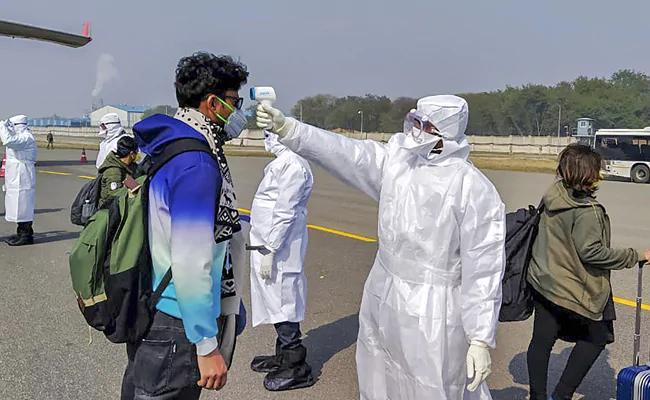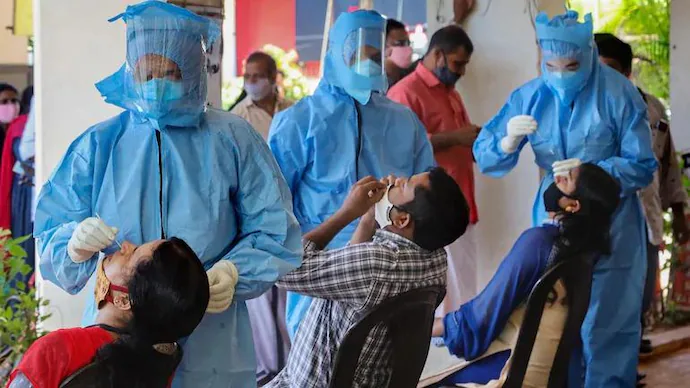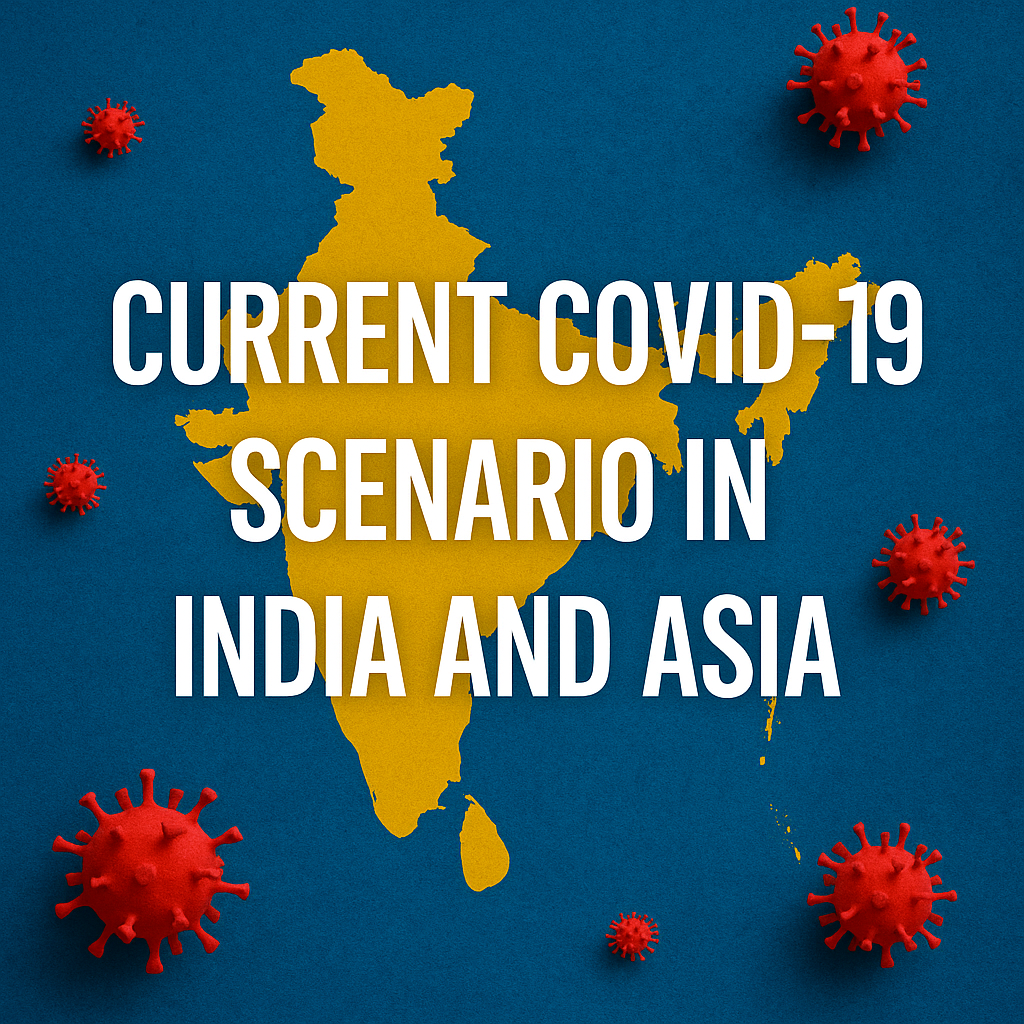
The COVID-19 pandemic, first identified in late 2019, has profoundly reshaped the global landscape, impacting health systems, economies, and societies worldwide. Although many countries have learned to live with the virus, the journey towards full normalcy remains intricate and complex. As of mid-2025, India and neighboring Asian countries find themselves at a crucial juncture, balancing the gains from vaccination campaigns and public health measures with new challenges arising from emerging variants and fluctuating case trends.
This in-depth report aims to provide a panoramic view of the current COVID-19 situation in India and Asia. Drawing on recent data, expert analyses, and historical context, it will discuss the virus’s evolving nature, the ongoing risks, vaccination progress, public health responses, socioeconomic impact, and mental health considerations. The article seeks to inform, reassure, and guide readers through an understanding of where we stand today and what lies ahead.
Tracing the Evolution: The COVID-19 Journey in India and Asia
To appreciate the current situation, it is essential to reflect briefly on the trajectory of COVID-19 since its arrival in the region. India reported its first COVID-19 case in January 2020. The initial months involved stringent lockdowns, aimed at buying time to prepare the healthcare system. Despite these efforts, India experienced two massive waves—first in 2020 and a far more severe second wave in 2021, dominated by the Delta variant. The second wave overwhelmed hospitals, causing widespread oxygen shortages and straining healthcare resources.
Asia, with its vast and varied populations, exhibited a mosaic of experiences. China, where the virus first emerged, employed rigorous containment measures, including strict lockdowns and mass testing, managing to keep case numbers relatively low after initial outbreaks. Countries like Japan and South Korea focused on technology-driven contact tracing and high public compliance with mask usage. Southeast Asian nations, balancing economic reopening with virus control, faced intermittent surges linked to new variants.
By late 2022 and 2023, the availability of vaccines and improved treatment protocols helped many countries reduce mortality rates. However, the virus did not disappear. Instead, it settled into endemicity in many regions, with periodic outbreaks keeping governments alert.
Current Case Trends: What the Numbers Reveal
As of May 2025, India reports a steady rise in COVID-19 infections, though the scale remains far below previous peaks. Data from the Ministry of Health indicate that metropolitan areas such as Mumbai, Delhi, Bangalore, and Chennai are witnessing higher incidence rates. These urban centers, characterized by dense populations and active movement, naturally facilitate faster viral transmission.
In contrast, rural areas report fewer cases, but limited testing capacity and healthcare infrastructure may contribute to under-detection. Experts caution against complacency, emphasizing that the virus’s presence in urban hubs can quickly spill over to smaller towns and villages.
Neighboring countries in Asia reflect diverse trends. China maintains a “zero-COVID” strategy in several provinces, leading to sporadic but contained outbreaks. Japan and South Korea report minor case fluctuations, bolstered by booster dose campaigns and adherence to health protocols. Southeast Asian countries vary, with nations like Thailand and Indonesia experiencing intermittent waves linked to variant emergence and vaccination challenges.
Epidemiologists underline the importance of continuous data collection and transparency to detect and respond promptly to these developments.
Risk Assessment: What Are India’s Health Experts Saying?
The question on everyone’s mind is how much risk India faces from the current COVID-19 surge. Top epidemiologists and clinicians across the country offer insights grounded in recent observations and global experience.
Dr. Meera Desai, a prominent epidemiologist from Mumbai, notes, “While the rise in cases is concerning, it does not suggest an impending wave like in 2021. Vaccination, natural immunity from past infections, and improved healthcare preparedness reduce the risk of widespread severe illness.”
However, she adds, “We cannot ignore the possibility of local clusters overwhelming healthcare facilities, especially in resource-constrained districts. Targeted public health responses and community engagement remain crucial.”
Healthcare workers also report increased patient visits for respiratory symptoms, urging better testing and isolation protocols. The concern extends to vulnerable groups, including the elderly, people with comorbidities, and those with compromised immune systems, who may face higher risks despite vaccination.
Vaccination: The Cornerstone of India’s Defense
India’s vaccination program, one of the largest ever undertaken globally, has been central to controlling COVID-19’s impact. Since the rollout began in early 2021, the government has administered over 2.2 billion doses, covering a large majority of the eligible population.
Vaccines such as Covishield (Oxford-AstraZeneca), Covaxin (Bharat Biotech), and others approved for emergency use have contributed to reducing severe cases and deaths. Booster doses, introduced to address waning immunity, are prioritized for healthcare workers, senior citizens, and immunocompromised individuals.
Despite these advances, challenges persist. Vaccine hesitancy fueled by misinformation and cultural beliefs remains a barrier in certain states. The government and NGOs continue targeted awareness campaigns using local languages and influencers to improve acceptance.
Access issues, particularly in remote tribal and rural areas, are tackled through mobile vaccination units, public-private partnerships, and community health workers’ involvement. These efforts are critical to achieving equitable vaccine coverage.
Variants: The Ever-Changing Challenge
The virus that causes COVID-19, SARS-CoV-2, is an RNA virus prone to mutations. Since the pandemic began, several variants of concern (VOCs) have emerged, each altering the pandemic’s course in distinct ways.
India’s devastating second wave was largely attributed to the Delta variant, which spread rapidly and caused severe illness. The Omicron variant, identified in late 2021, brought a surge of milder cases but exhibited high transmissibility and immune evasion.

As of 2025, newer subvariants have emerged. Indian genomic surveillance programs, conducted by institutions such as the Indian SARS-CoV-2 Genomics Consortium (INSACOG), continuously monitor viral genetic changes to identify VOCs early.
Dr. Rajesh Kumar, a virologist involved in genomic surveillance, explains, “Though current variants are less virulent than Delta, they can still lead to significant outbreaks, especially if vaccine-induced immunity wanes or public health measures lapse.”
Ongoing research focuses on developing next-generation vaccines that target multiple variants and exploring antiviral drugs to complement vaccination.
Public Health Measures: Learning from the Past to Protect the Future
India and its Asian neighbors have adapted their public health strategies based on lessons from the pandemic’s earlier phases. Early, nationwide lockdowns gave way to more localized and strategic interventions, balancing virus containment with socioeconomic needs.
Mask mandates, hygiene promotion, physical distancing, and testing have become normalized behaviors in public life. In many states, mask-wearing in crowded or indoor settings remains mandatory, reflecting a cautious approach despite vaccination gains.
Testing infrastructure has expanded, with rapid antigen tests and RT-PCR tests widely available. Contact tracing efforts, often aided by digital tools such as Aarogya Setu in India, help identify and isolate cases swiftly.
Healthcare systems have bolstered capacity, increasing ICU beds, oxygen supply, and trained personnel. Vaccination centers operate round the clock to keep pace with booster dose demands.
The government continues public awareness campaigns to emphasize responsible behavior, particularly as festivals, weddings, and travel pick up.
Economic Impact and Recovery: Navigating the Long-Term Effects
COVID-19’s ripple effects extend far beyond health, impacting economies, education, and social stability. India’s economy contracted sharply during lockdowns, affecting millions dependent on daily wages and informal employment.
Recovery efforts include stimulus packages, credit support for businesses, and programs aimed at reviving tourism and manufacturing. The digital economy has accelerated, with increased adoption of online education, telemedicine, and e-commerce.
Yet challenges remain. Supply chain disruptions, inflation, and employment insecurity continue to affect large sections of society. The pandemic has exacerbated inequalities, making inclusive growth a key priority.
Experts advocate for sustained investment in healthcare and social protection as pillars of long-term resilience against future shocks.
Mental Health: Addressing the Pandemic’s Invisible Crisis
The psychological toll of COVID-19 has become increasingly evident. Prolonged isolation, grief, job losses, and uncertainty have triggered mental health challenges across India and Asia.
Surveys indicate rising rates of anxiety, depression, and post-traumatic stress disorder (PTSD), particularly among frontline workers and young adults. The stigma surrounding mental health often discourages people from seeking help.
In response, healthcare providers have integrated mental health services into COVID-19 care, offering tele-counseling, community support groups, and awareness drives. NGOs and government programs work to destigmatize mental health issues and expand access to care.
Schools and workplaces are encouraged to incorporate mental wellness initiatives, recognizing their importance in overall pandemic recovery.
Regional Variations: Diverse Experiences Across India and Asia
India’s vast and diverse landscape means COVID-19’s impact varies widely by region. Urban centers face higher transmission risks due to density and mobility, while rural areas contend with limited healthcare access and lower testing rates.
For example, Maharashtra, home to Mumbai, has reported consistent case increases, prompting localized containment efforts. In contrast, northeastern states like Sikkim have reported fewer cases but maintain vigilance through vaccination and public health measures.
Asian countries also exhibit heterogeneity. Singapore’s comprehensive testing and vaccination policies have kept case numbers low. Indonesia’s archipelagic geography complicates healthcare delivery but innovations in telehealth improve outreach.
Understanding these regional nuances allows policymakers to tailor responses effectively.
The Power of Regional and Global Cooperation
The fight against COVID-19 transcends borders. India and Asian nations actively participate in multilateral efforts, sharing data, research, and resources.
WHO’s South-East Asia Regional Office (SEARO) supports member countries with technical guidance and training. Initiatives such as COVAX aim to ensure equitable vaccine distribution worldwide.
Collaborations on variant surveillance, vaccine development, and treatment protocols enhance collective preparedness. The pandemic has reinforced the need for global solidarity in addressing public health crises.
Preparing for the Future: Building Resilience Beyond COVID-19
COVID-19 has exposed vulnerabilities but also catalyzed innovation. India’s healthcare infrastructure has improved, with increased funding for hospitals, laboratories, and research institutes.
Digital health technologies, including telemedicine and AI-driven diagnostics, have gained prominence. Public health communication strategies now emphasize transparency and community involvement.
Experts call for sustained commitment to pandemic preparedness, including stockpiling essential supplies, training healthcare workers, and fostering international partnerships.
The concept of “One Health,” integrating human, animal, and environmental health, is gaining traction to prevent future zoonotic outbreaks.
Final Reflections: A Balanced Approach to Living with COVID-19
The trajectory of COVID-19 in India and Asia is shaped by a complex interplay of biological, social, and policy factors. While vaccines and improved treatments have reduced the pandemic’s severity, the virus remains a persistent challenge.
Citizens are encouraged to stay informed, adhere to public health guidelines, and participate actively in vaccination campaigns. Governments must maintain flexible, evidence-based strategies, balancing health protection with socioeconomic needs.
The experience of the past five years underscores humanity’s resilience and adaptability. With collective responsibility and sustained effort, India and Asia can navigate the path ahead, minimizing COVID-19’s impact and emerging stronger from the ordeal.

